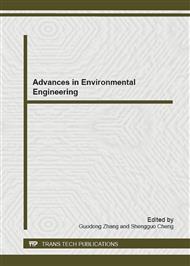p.843
p.847
p.851
p.855
p.859
p.865
p.870
p.877
p.884
Soil Quality Change during Reversal of Desertification in Agro-Pastoral Transition Zone of Northern China
Abstract:
Based on the field surveys and laboratory analysis, soil physical, chemical and biological properties were studied at different degree of the reversal of desertification in the agro-pastoral transition zone of northern China. The results showed the dominant soil particle size changed from coarse-fine sand to a combination of very fine sand and silt + clay, and corresponding levels of each soil nutrient increased. The content of coarse sand was significantly and negatively correlated with soil nutrient contents, whereas nutrient contents were significantly and positively correlated with the contents of fine sand and silt + clay. The changes in soil nutrient contents and their availability were strongly controlled by the changes in the soil particle size distribution, with increased fineness of soil texture accompanied by an enrichment of soil nutrients. Soil quality increased with the increase of the restoration year. The results of this study provide support for the belief that artificial restoration and reforestation in areas with severe desertification can improve soil quality.
Info:
Periodical:
Pages:
859-864
Citation:
Online since:
November 2012
Authors:
Price:
Сopyright:
© 2012 Trans Tech Publications Ltd. All Rights Reserved
Share:
Citation:


